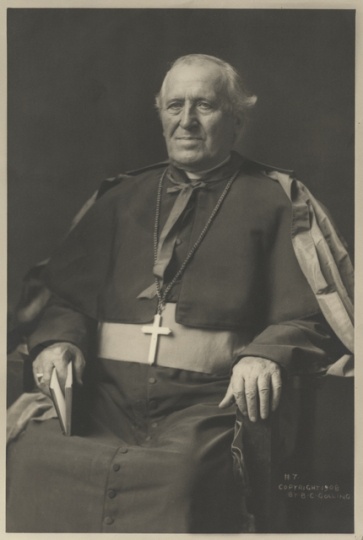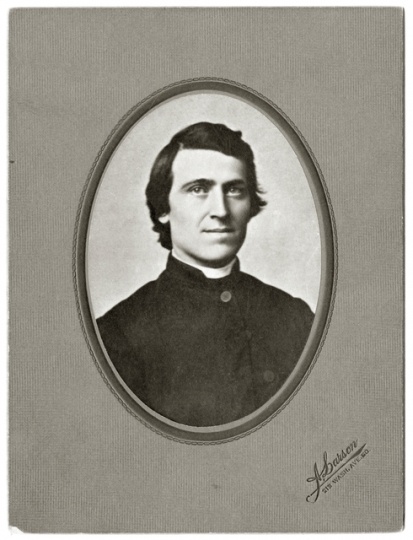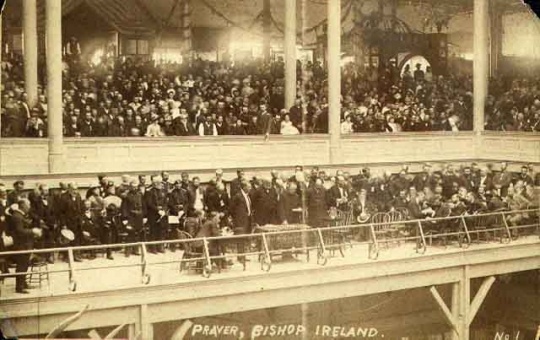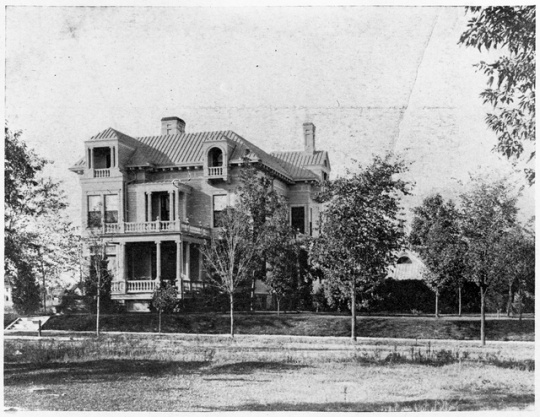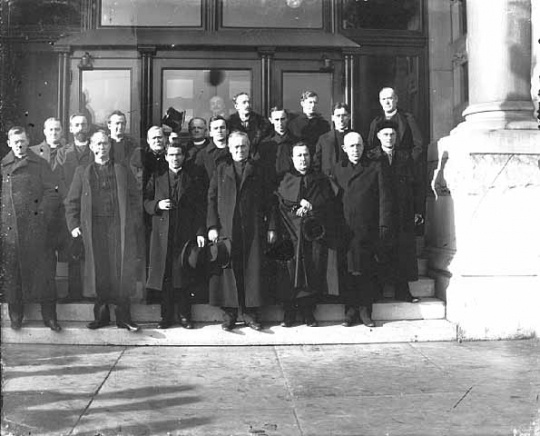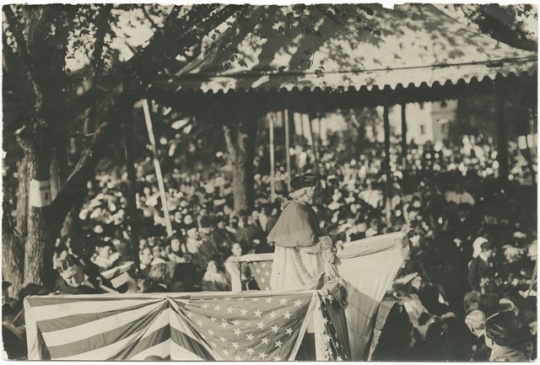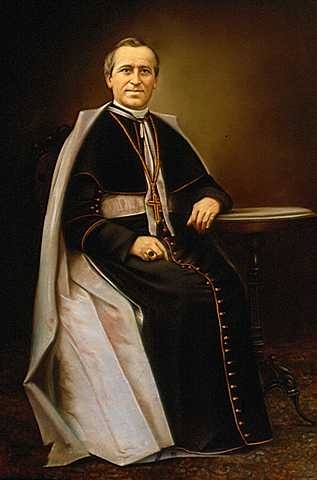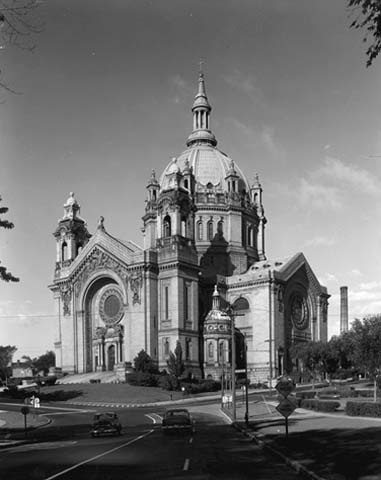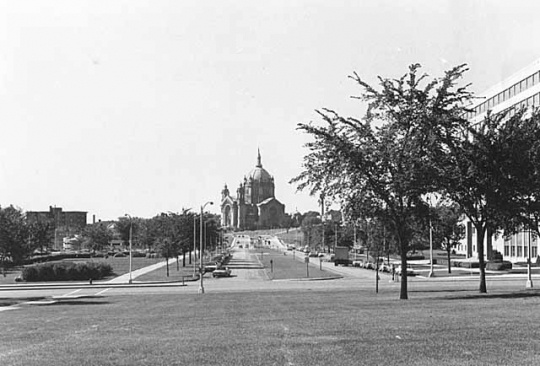John Ireland was ordained a Catholic priest in St. Paul in 1861. By the time he was appointed archbishop of the newly organized Archdiocese of St. Paul in 1888, he was one of the city’s most prominent citizens. Ireland’s causes were many; he is remembered for attracting Irish immigrants to the state, for founding educational institutions, and for establishing the Catholic church in Minnesota.
Ireland was born in Burnchurch, County Kilkenny, Ireland, on September 11, 1838. His father, Richard Ireland, was a carpenter who was widowed with a three-year-old daughter, Mary Ann, when he married Judith Naughton in 1836. Richard and Julia, as she was known, had five children—Ellen, Eliza, Richard, Julia, and John.
Like many Catholic boys in Ireland, young John was an altar server who assisted priests in celebrating Mass. One of his earliest influences was Fr. Theobald Mathew, founder of what became the Catholic Total Abstinence Society. Ireland assisted Fr. Mathew as he preached about abstinence from liquor as a means of improving the lives of laborers. This was a message that Ireland would embrace throughout his ministry.
Richard Ireland joined a group that emigrated to America in 1849. Julia and their children joined him later that year in Burlington, Vermont. In 1851 the family moved to Chicago, where Richard met John O’Gorman, also from Kilkenny. Hoping to find land and jobs, the men pooled their resources, joined their families, and set off for Minnesota. The Irelands and O’Gormans arrived in St. Paul on May 19, 1852.
By the next year, the two families had acquired land and built houses. Meanwhile, Joseph Crétin, St. Paul’s first Roman Catholic bishop, was struggling to oversee a diocese that covered 166,000 square miles. Crétin recruited John Ireland and his friend Thomas O’Gorman to the priesthood. In 1853, the boys embarked on eight years’ study in France.
Ireland returned to Minnesota in 1861. After his ordination to the priesthood, he served as chaplain of the Fifth Minnesota Volunteer Infantry Regiment during the Civil War. He was appointed pastor of the Cathedral of St. Paul in 1867, and was named coadjutor bishop of St. Paul in 1875. During these years Ireland forged his reputation as an energetic community leader and a forceful public speaker.
As coadjutor, Ireland threw himself into recruiting Irish immigrants to the state. Believing that farming would elevate the health and spirits of beleaguered immigrants, he founded the Catholic Colonization Bureau of St. Paul in 1876. He became an agent of the St. Paul and Pacific Railroad, the first of his eleven such agreements with railroads. It was a sound plan: Though the bureau didn’t attract or retain its anticipated number of Irish immigrants, through it families gained farmland close to churches, railroads gained customers close to their new lines, and the diocese gained new Catholics. New towns were formed: De Graff and Clontarf in Swift County; Adrian in Nobles County; Avoca, Iona, and Fulda in Murray County; Graceville in Big Stone County; and Minneota and Ghent in Lyon County.
Readers of the December 4, 1884, Northwestern Chronicle learned that a Catholic seminary would open in St. Paul the next year. Bishop Ireland solicited building funds for the new St. Thomas Aquinas Seminary; he also donated land and his personal savings to the project. Ireland recruited faculty and students, hoping to establish a succession of homegrown priests to serve Minnesota and beyond. This single educational institution led to the development of many others: the University of St. Thomas, Saint Paul Seminary, St. Thomas Military Academy, and Nazareth Hall.
Ireland was named bishop ordinary in 1884; that same year, he was a leader of the movement to establish the Catholic University of America, which opened in Washington, DC, in 1887. When St. Paul became an archdiocese in 1888, Ireland was named its first archbishop. During this last phase of his ministry, Ireland’s influence on St. Paul and Minnesota was secured. He commissioned architect Emmanuel Louis Masqueray to design the Cathedral of St. Paul and the Church of St. Mary (later Basilica of St. Mary) in Minneapolis. In 1915, Mass was celebrated for the first time in both buildings. As archbishop, he also advanced his progressive views on the national stage. He supported the Republican party’s views on nationalism and on equal rights for African Americans. He endorsed William McKinley and Theodore Roosevelt after speaking with them at temperance rallies. He delivered stirring sermons across the country.
After more than a year of failing health, Archbishop John Ireland died in St. Paul on September 25, 1918. His old friend Thomas O’Gorman (by then Bishop of Sioux Falls) and his sister Ellen (by then Mother Seraphine of the Sisters of St. Joseph and also a revered Catholic elder) were at his bedside.











